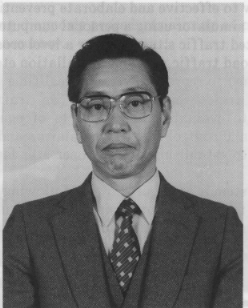 General Manager, Basic Technology Research Div.
General Manager, Basic Technology Research Div.Hirotsugu OOBAYASHI
These days, energy and environment are global problems hotly debated. Particulary in the transportation sector, they are getting serious. Especially, energy and CO2 are topics of lively discussion. Recent statistics by transportation modes of energy consumption and CO2 emission tell that in Japan, railway stands indisputably at a great advantage over the other transportation modes. This is, however, a genaral comment and in future the railway will be demanded to be more choosy about material or component with more emphasis laid on energy saving and environment-friendiness.
Easy to understand as a concept, but what does "environment-friendly" concretely mean? Now, this theme is seriously grappled with and its quantification is tried in many countries. One of the attempts is Life Cycle Analysis (LCA). This method requires estimation of the following three items on the basis of specified standards; (1) energy consumption or CO2 emission, (2) air pollution by NOx, SOx, etc. and (3) level of concern in water pollution, which leads to quantitative grasp of environmental load of these three items. The most fundamental item is (1), where it is necessary to calculate how much energy is consumed during the life cycle from output to use and to final disposal. As CO2, a major source of global warming, is correlated with energy consumption, this can be calculated through tracing to the origin of fossil fuel or nuclear power. How to quantify (2) and (3) is a future task for the LCA.
Furthermore, after the above-mentioned life cycle comes a problem of recycling the materials and components. These days, we have been keenly interested in the LCA which takes recycling into account. Although it is generally said recycling is effective in energy conservation, will it be invariably so? From a viewpoint of taking recycling into consideration at the stage of product designing, the LCA will provide a useful guide.
It is aluminium that is claimed to be the most effective material for energy conservation if it is recycled. It is said that recycling used aluminium consumes 30 times less energy than newly producing aluminium metal. We have already seen recycled aluminium vehicle for rapid transit rails almost all components of which, including underframe, outside panel and roofing, have been reclaimed from aluminium railway vehicles to be scrapped.
I belive that it is essential not only in future but in present R&D on railway materials and components to keep such aspects as energy, recycling and environment foremost in mind.